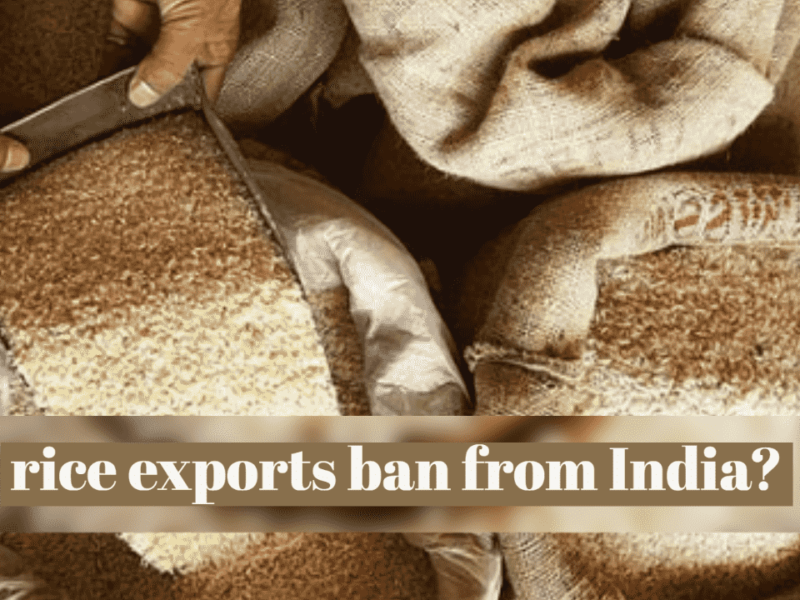Rice exports ban from India!
Rice exports ban from India said on July 20 that it would impose export restrictions on non-basmati rice in a consideration to bring down domestic rice prices, which had risen by more than 30%.
According to the government, the prohibition would prevent the grain from being sold abroad with “immediate effect” and is expected to affect roughly 75%–80% of Indian rice exports.
The recent action by India expands upon its earlier, more restrictive export prohibitions on rice. India established export restrictions on broken rice in 2022 and added a 20% supplemental tariff to exports of non-basmati rice. However, India’s rice exports in calendar year 2022 reached a new high of 22.3 million metric tons. However, the most recent restriction may cause a decline in those figures, increasing the likelihood of higher worldwide pricing.
impacted areas because of Rice exports ban from India
The Middle East and numerous African countries are also at risk due to India’s prohibition on rice exports! which affects more than just Asia.
Sub-Saharan Africa and the Middle East and North Africa region are home to the markets most vulnerable to India’s export restrictions.
Although India has already prohibited the export of non-basmati rice! this prohibition may have a wider-reaching effect than in the past.
Non-basmati exports were prohibited by India in October 2007! but that prohibition was later temporarily lifted and restored in April 2008, driving up prices by over 30% to a record high of $22.43 per hundredweight (cwt).
According to the International Potato Center! a group that conducts agricultural studies, prices tripled in a period of six months.
Impact of India’s prohibition globally
The Philippines, Malaysia, and Vietnam in Southeast Asia, as well as Nigeria, Ivory Coast, and Senegal in West Africa, are the nations that depend on Indian rice the most.
Exports of basmati rice and parboiled rice, which has only partially been boiled, are still permitted.
According to Joseph Glauber, a senior research fellow at the International Food Policy Research Institute, prices began to increase last year as a result of the severe floods in Pakistan that reduced world supplies.
The ban has an impact on a minor fraction of the rice consumed in the US. Under 2.5% of US rice imports, according to Charles Hart, a commodities analyst at BMI, are expected to be impacted.
the expanding influence of India on the world rice market
Only in the past ten years has India become the greatest rice exporter in the world. India was a net importer of rice during the 1960s and the first few years of the 1970s due to commonly low yields and production. India had essentially attained self-sufficiency by the late 1970s! and by the early 2000s it had turned into a net exporter of rice. Rice production has climbed by almost 40 million tons since 2010 to a total of 136 million tons! making India the second-largest producer after China’s 146 million tons. This represents a 40% growth. Over the same time period, India’s exports increased by 20 million tons.
India’s move to ban the export of non-basmati rice types exposes the already dangerous global food security to new risks in the commodities markets. What will be the result will depend on a number of variables, including the weather in the upcoming weeks! the specifics of the export restriction, and the responses of other rice exporters. We believe that earlier price rise lessons—which had long-lasting effects on world hunger, food insecurity, nutrition! and poverty—will inform trade policy decisions and prevent nations from validating export restrictions!




